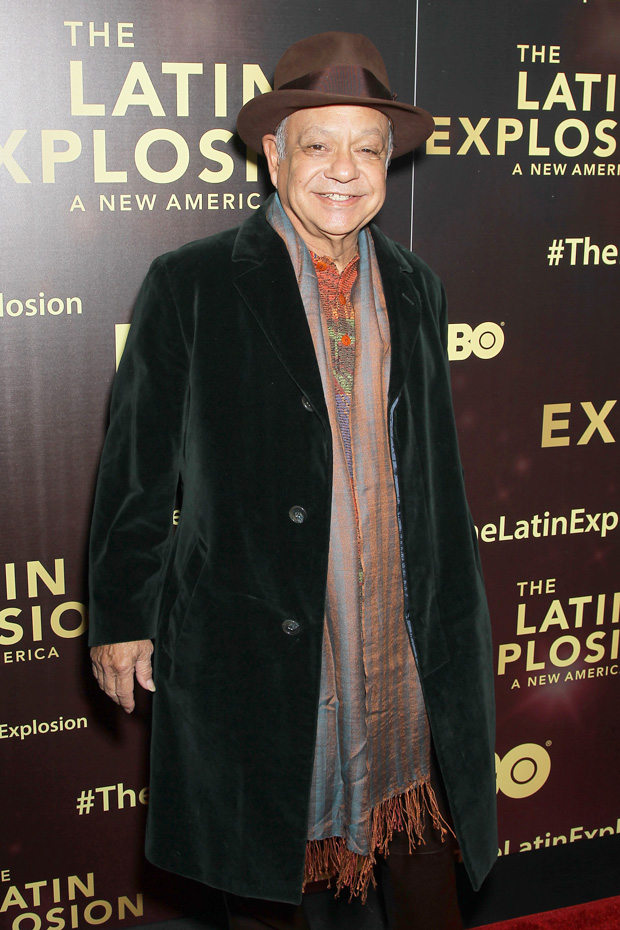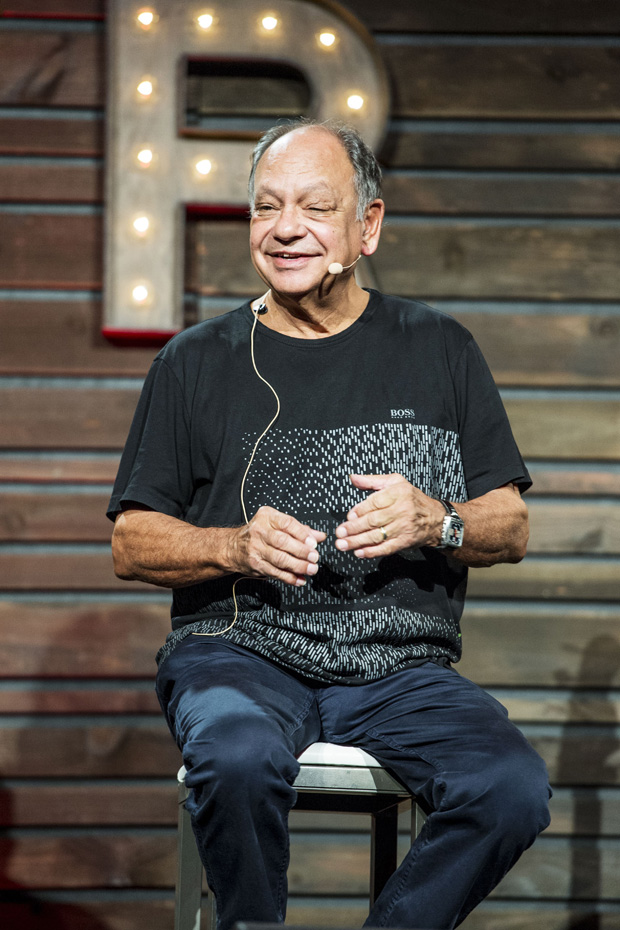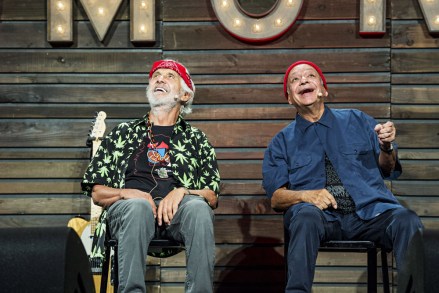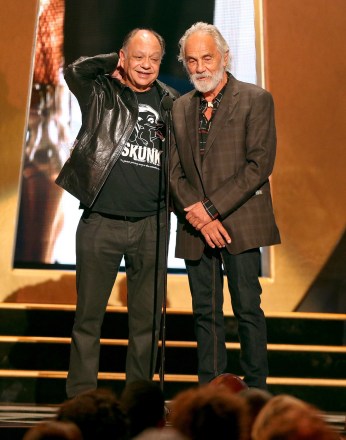
To most, Richard “Cheech” Marin is a movie star, a comedy legend, and a counterculture icon. However, the man — who found success as one-half of the stoner comedy duo Cheech & Chong and later starred opposite Don Johnson on the hit series Nash Bridges – has spent the last four decades buying art, creating what has become the most extensive private collection of Chicano art in that world. That collection finally found a permanent home when The Cheech Marin Center for Chicano Art and Culture at the Riverside Art Museum launched in 2022.
“It’s so gratifying, and it’s so rewarding,” Cheech Marin tells HollywoodLife. “I feel very honored and lucky to be in this place, in this position to be able to do this. For the museum to come together as it has, it required a confluence of a lot of factors that had to come in at the same time. And they did. It’s really kind of miraculous that this happened. And I just recognized it when it was happening, and then had the good sense to walk through the door and participate.”
For Cheech, it’s a way to celebrate his heritage. Chicano rose as a term used by Americans of Mexican descent. Though it was initially used as a pejorative against “less-cultured” Mexican-Americans, per History, the term became one of pride during the civil rights movements of the 1960s. It’s woven within America’s history, similar to how Cinco de Mayo – initially, a minor holiday in observation of the Battle of Puebla in 1862 — has since become a day for all U.S. citizens to celebrate Mexican-American culture.
Similarly, the goal of The Cheech is to highlight the Chicano art and expression within America throughout the years. Currently on display at the museum Land of Milk & Honey, an exhibit presented in partnership with the MexiCali Biennial (a non-profit contemporary visual arts organization. Land of Milk & Honey is a traveling multidisciplinary arts and culture program featuring works by over 40 artists whose works focus on concepts of agriculture in the regions of California and Mexico. The exhibit is on display until May 28.

On June 18, The Cheech will present Pura Pechanga, a free, family-friendly outdoor festival for the community featuring art and music. The event will coincide with the first anniversary of The Cheech. (The Pura Pechanga festival is presented by both The Cheech and Riverside Art Museum, with the event taking place on Mission Ave in front of both museums.) The night before (June 17) will see East LA bands Quetzal and La Santa Cecilia perform together for “Music From Below: A History and Future of Chicano Music,” a concert at the Riverside Municipal Auditorium, with proceeds to benefit The Cheech. Doors open at 7pm. Concert tickets start at $32.
“You know, I can’t believe that it happened,” Marin tells HL about the museum. “I’ve been thinking of all the factors that came together for the museum to happen. They come to you with this proposition, and the community supports it, and there is a collection. I don’t know of any other museum that could have taken the whole collection and featured it as the mainstay of the museum. There’s no other museum I know that could accept, even if they wanted to, 550 paintings all at once.”
“Then they came to me with this proposition. And I didn’t understand it at first. ‘You want me to buy a museum?'” Cheech tells HL. “Well, I’m doing okay. I don’t know if I’m doing museum rich, but you know, we could talk about it.”
There seems to have been some divine providence in The Cheech’s creation. First, Marin’s lifelong love of art created a collection ready for a museum space. Then, city officials in Riverside and the Riverside Art Museum invited Cheech to display his work in what used to be the city’s public library. Cheech was unsure about giving his collection a private home-away-from-his-home. But, he got a sign when he found out how big the building was: 60,420 square feet.
Four twenty. Cheech took it as a sign from above.

After a City Council vote resulted in a 4-0 decision to fund the museum — despite grumblings from some members (h/t Los Angeles Times) – the project began. It came to around $14.5 million to make, subsidized by grants and private donors. “It opens you up to a different level of grants that you can ask for when you’re working with the city, rather than being a private citizen,” says Marin.
When it was all said and done, the first-ever (and currently, only) museum dedicated to Chicano art opened. One year later, the museum is thriving, and Cheech is looking towards the future.
“What we’re trying to do is establish relationships with other museums around the country,” he tells HL, “and around the world as well—and doing exchange programs with them. Because my goal is to have the Cheech be recognized as an international destination. And they’re starting to get there. We’ve only been open since June. And Hyperallergic magazine named us one of the top fifty shows in the world last year. This is a museum that’s six months old! So, we’re doing okay.”
It’s an amazing piece of Marin’s legacy, along with his work in front of and behind the film camera. “I’m just lucky,” he tells HL. “And of course, it involves a lot of hard work, and having the collection, everybody joins it together at the same time. But it’s luck that all of a sudden, all these factors came together at the same time.”
“The community, and now the nation, has come together, and the world has come together too,” he continues. “And we were international before, but to a very small degree. But we’ll be international to a much larger degree now. I get to share this with everybody, and it’s there, and they can share. And it’s the first Chicano museum. That’s really significant that we have gone this long without having a specific Chicano museum. But here we are, and we’re going to keep going, and into all kinds of various avenues as we go forward.”


